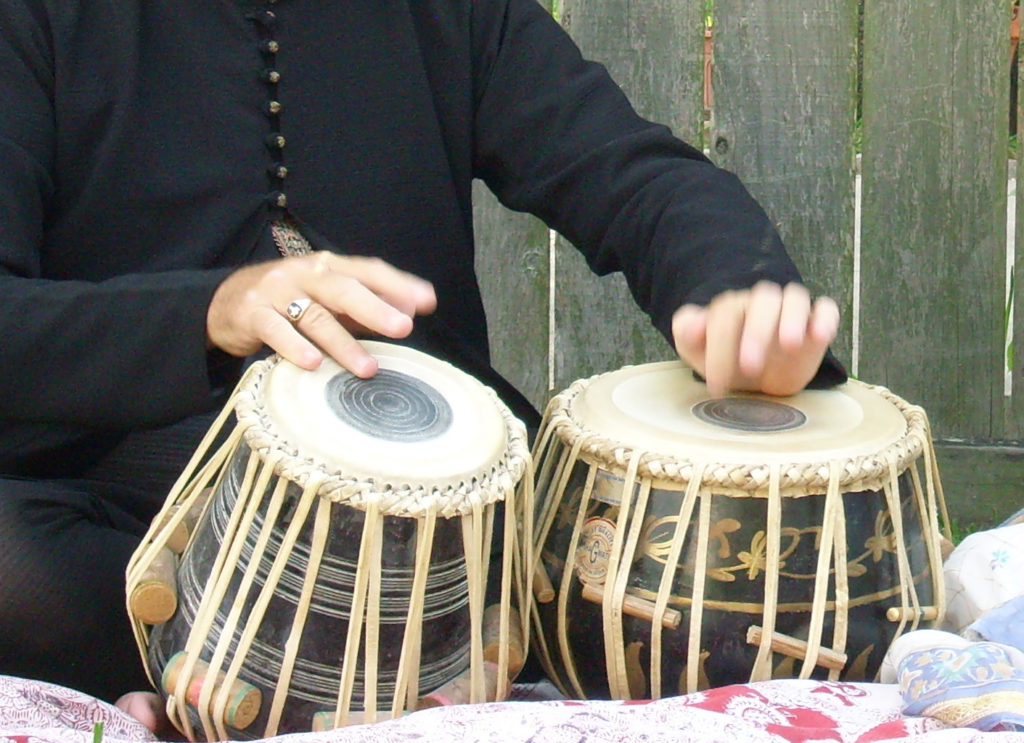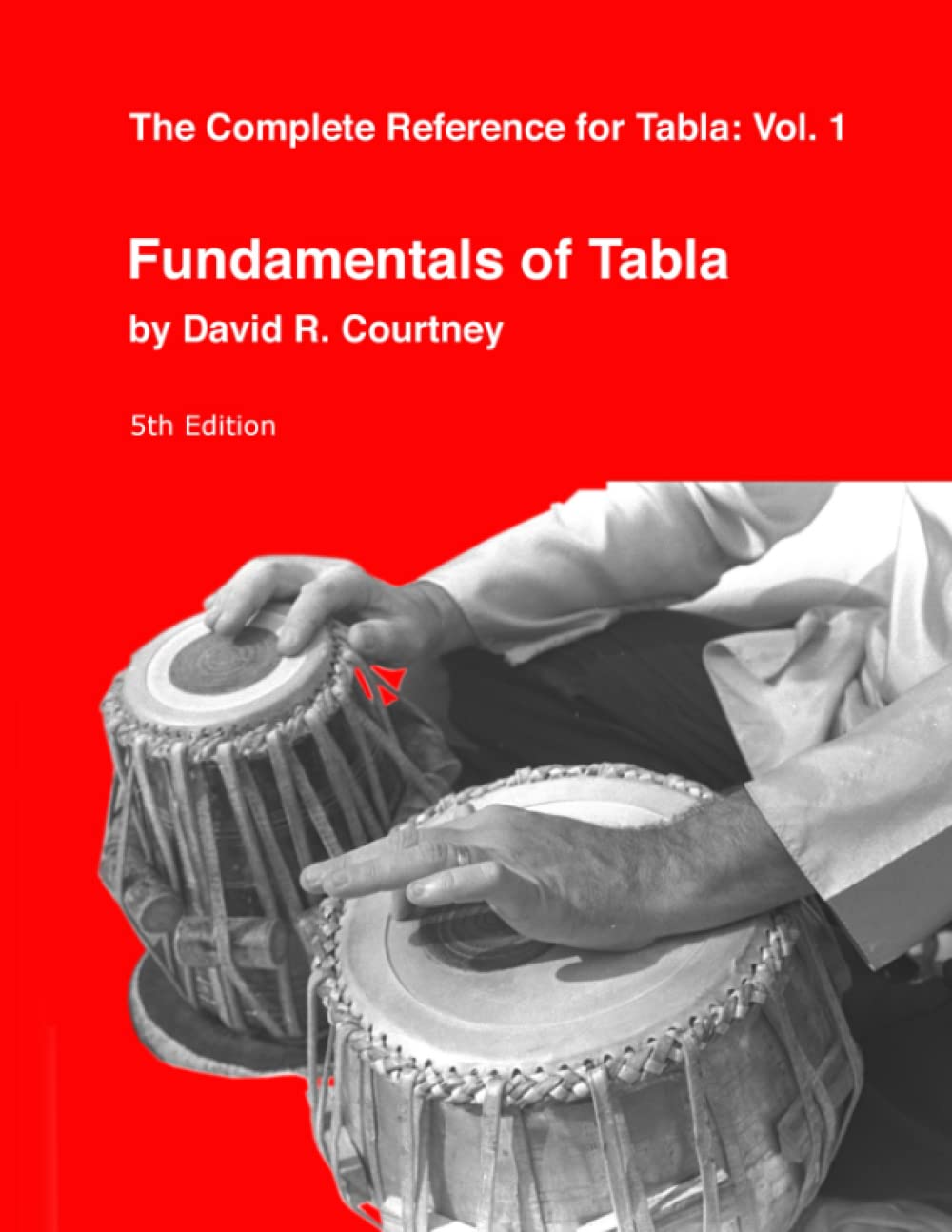In North Indian Music

North Indian music is known for its rich emphasis on rhythm. The tabla, pakhawaj, and the dholak, are known for the complexity and beauty of their rhythmic forms. But the novice may be inundated with a confusing array of terms such as mohara, tihai, chakradar, kaida, and a plethora of other unfamiliar terms. In this page and the linked sub-pages, we will attempt to clarify these.
| IF YOU ARE INTERESTED IN TABLA, THIS BOOK IS FOR YOU |
|---|
This is the first volume of the most complete series on the tabla. Fundamentals of Tabla It is available around the world. Check your local Amazon for pricing. |
It is useful to keep one thing in mind when we look at these various forms. All of the material that we may find, fall into one of two classes. These classes are determined by how the sam (first beat of the cycle) is treated. If the ending includes a sam, then it will have a fundamentally different math than if the sam is not included.
CYCLIC FORMS
The cyclic forms of tabla are those which do not include the sam as a termination. Examples are theka, kaida and rela, (This will be explained in greater detail in the linked articles below).
The math behind the cyclic form is very simple. If we have a cyclic composition in Tintal of 16 beats, then these will consist of some multiple of 16 (i.e., 16, 32,48, 64 etc.). Regardless of what multiplier is used, the terminal sam will never be included.
The math behind the cyclic forms is described in a simple example. If an article of clothing requires two metres of cloth, then two articles will require four metres, three will require six metres, etc. The math behind this form is so simple that it needs no discussion.
CADENTIAL FORMS
The simplicity of the math behind the cyclic form lies in stark contrast to that of the cadential form. Since the sam of the final cycle is an inherent part of the cadential form, typical number of matras (beats) for Tintal would be 17, 33, 49, 65 etc.
This may not be intuitive, so let us look at a simple analogy. Let us visualise a picket fence as shown in the illustration below. If we wish to have a picket fence that is 5 feet wide with pickets spaced evenly at 1 picket-per-foot, it will require 6 pickets. In a similar manner if we wish this fence to be 10 feet wide it would require 11 pickets; if we wished it to be 15 feet wide, it would require 16 pickets, etc.. If this is difficult to understand, remember that a 1 foot picket fence still requires 2 pickets.

This last analogy of the picket fence describes the math behind the cadential form.
With these points in mind, we can link to articles which describe them in greater detail.
If we wish to simply jump to the individual forms, here are links which will take us immediately to the relevant discussion.
- Amad
- Chakradar
- Chalan
- Ekhatthu and Dohatthu
- Fard and Sath
- Folk / Film “pickup”
- Gat
- Kaida
- Ladi and Rao
- Laggi
- Mohara
- Mukhada
- Paran
- Peshkar
- Prakar
- Rela
- Thappi
- Theka
- Tihai
- Tipali
- Tukada